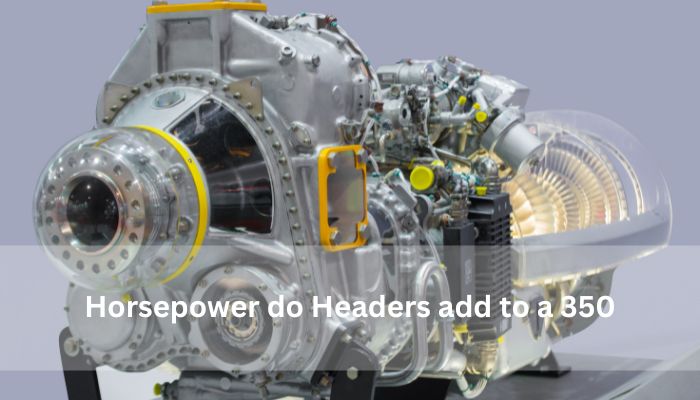9 Best Wheel Balancing Techniques for Enhanced Vehicle Handling And Control
9 best wheel balancing techniques for enhanced vehicle handling and control: Proper tire pressure, regular wheel alignment, correct tire rotation, choosing the right tires, using hub-centric wheels, using wheel spacers, avoiding excessive load, minimizing wheel weights, and frequent visual inspections. Wheel balancing is a crucial aspect of vehicle maintenance that directly affects handling and control.
It ensures that the weight of the wheel and tire assembly is evenly distributed, eliminating vibrations and improving overall performance. By following these nine techniques, you can optimize your vehicle’s balance for a smoother ride, better fuel efficiency, and increased safety.
From maintaining proper tire pressure and alignment to choosing the right tires and minimizing wheel weights, each technique contributes to a well-balanced vehicle. Additionally, regular visual inspections and avoiding excessive loads on your wheels can prevent potential issues and prolong their lifespan. In this guide, we will explore these nine best practices for wheel balancing to enhance your vehicle’s handling and control.
The Importance Of Wheel Balancing
Wheel balancing is crucial for vehicle handling and tire longevity.
Enhanced Vehicle Performance
Proper wheel balancing significantly improves vehicle stability during driving.
Extended Tire Lifespan
Correctly balanced wheels help distribute weight evenly, enhancing tire durability.

Credit: www.bankrate.com
1. Traditional Static Wheel Balancing
One of the most commonly used wheel balancing techniques is traditional static wheel balancing. This technique involves measuring the wheel and tire weight distribution and adding counterweights to ensure proper balance. Let’s take a closer look at how this process works.
Measuring Wheel And Tire Weight Distribution
The first step in traditional static wheel balancing is to measure the weight distribution of the wheel and tire. This is typically done using a wheel balancer, which determines the exact imbalance of the wheel. The balancer displays the weight measurement in grams or ounces.
Adding Counterweights
Once the weight distribution is determined, the next step is to add counterweights to offset any imbalances. These counterweights are attached to the wheel rim using adhesive or clip-on mechanisms. The location of the counterweights is determined based on the measurement of the imbalance, and they are strategically placed to bring the wheel into proper balance.
It’s important to note that each wheel requires its own set of counterweights, as the weight distribution can vary from wheel to wheel.
The goal of adding counterweights is to redistribute the weight and achieve an even distribution throughout the wheel and tire assembly. By doing so, the wheel can rotate smoothly and without any excessive vibrations, resulting in enhanced vehicle handling and control.
Traditional static wheel balancing is a crucial maintenance procedure to ensure the smooth operation of your vehicle. It not only improves handling and control but also reduces tire wear and minimizes stress on other suspension components.
Keep in mind that regular wheel balancing is necessary to correct imbalances that may occur due to tire wear or changes in weight distribution over time, so make sure to include it in your routine vehicle maintenance.
Next time you visit an auto shop for wheel balancing, you’ll have a better understanding of the traditional static wheel balancing technique and its importance in achieving a balanced and smooth ride.
2. Dynamic Wheel Balancing
Dynamic wheel balancing is a highly effective technique that helps to maintain optimal vehicle handling and control. Unlike static wheel balancing, which deals with imbalances while the vehicle is stationary, dynamic wheel balancing takes into account the imbalances that occur when the vehicle is in motion. This ensures a smoother and safer driving experience, reducing vibrations and enhancing overall performance.
Detecting Imbalances While Driving
One of the key benefits of dynamic wheel balancing is its ability to detect imbalances while driving. This is achieved using advanced sensors and computer algorithms that continuously monitor the wheel’s performance while the vehicle is in motion. The sensors can detect any vibrations or wobbling caused by imbalanced wheels, allowing the system to make real-time adjustments to bring the wheels back into balance, ensuring a stable and smooth ride.
Advanced Balancing Machines
In order to perform dynamic wheel balancing, specialized advanced balancing machines are used. These machines are equipped with advanced technology that accurately measures the imbalances of the wheels and determines the exact weight and location of the counterweights needed to balance them. The machines are capable of high precision balancing, ensuring that the wheels are perfectly balanced for optimal performance. This advanced technology allows for efficient and effective dynamic wheel balancing, resulting in improved vehicle handling and control.
With dynamic wheel balancing, drivers can enjoy a smoother and more comfortable ride, as well as enhanced vehicle control. By detecting imbalances while driving and using advanced balancing machines, this technique ensures that the wheels are perfectly balanced, reducing vibrations and improving overall performance. So, if you want to experience enhanced vehicle handling and control, dynamic wheel balancing is definitely a technique worth considering.

Credit: www.caranddriver.com
3. Road Force Wheel Balancing
Road Force Wheel Balancing is a top technique for optimizing vehicle handling and control. This method focuses on identifying and correcting imbalances in wheels to ensure a smooth and stable ride. By addressing uneven weight distribution on wheels, Road Force balancing enhances driving performance and safety.
Road Force Wheel Balancing is a cutting-edge technique that simulates tire pressure on the road to minimize vibration and enhance vehicle handling and control.
Simulating Tire Pressure On The Road
Simulating tire pressure on the road ensures a smooth ride by mimicking real-world driving conditions to detect and correct imbalances.
Minimizing Vibration
Road Force Wheel Balancing helps in minimizing vibration by identifying and rectifying wheel and tire imperfections.
4. Bead And Rim Flange Balancing
When it comes to enhancing vehicle handling and control, bead and rim flange balancing is a crucial technique. This balancing method focuses on addressing issues related to tire uniformity and overall performance. By incorporating bead and rim flange balancing into your vehicle maintenance routine, you can effectively improve tire uniformity and significantly enhance your driving experience.
Addressing Bead And Flange Issues
Bead and rim flange issues can impact tire performance and overall vehicle handling. By addressing these issues through proper balancing techniques, you can ensure optimal contact between the tire and the rim, reducing the potential for vibrations and irregular wear. This approach enhances safety and driving comfort while also extending the lifespan of your tires.
Improving Tire Uniformity
Implementing bead and rim flange balancing contributes to enhancing tire uniformity, which is essential for smooth and stable driving. By addressing variations in tire construction and addressing any potential imbalances in the bead and rim flange areas, you can promote consistent tire performance and overall vehicle handling. This technique plays a key role in minimizing potential steering vibrations and ensuring a comfortable driving experience.
5. Hub-piloted Wheel Balancing
Hub-piloted wheel balancing is a crucial technique designed to ensure precise wheel mounting by centering the wheel on the hub of the axle. This method is particularly advantageous for heavy-duty trucks and buses as it provides improved stability, reduced vibrations, and enhanced control over the vehicle’s handling.
Focusing On Hub-centricity
This technique focuses on achieving perfect hub-centricity, ensuring that the wheel is accurately centered on the hub of the axle. By achieving this precise alignment, hub-piloted wheel balancing effectively minimizes the risk of shimmy and wheel vibrations, thereby enhancing the overall driving experience.
Reducing Vibrations
Hub-piloted wheel balancing significantly reduces vibrations caused by imbalanced wheels, promoting a smoother and more comfortable ride. This method minimizes the potential for steering wheel oscillations and ensures a more stable and controlled driving experience, particularly at higher speeds.

Credit: www.mural.co
Frequently Asked Questions On 9 Best Wheel Balancing Techniques For Enhanced Vehicle Handling And Control
Which Wheel Balancing Method Is Best?
Dynamic wheel balancing is the most effective method for achieving optimal wheel balance. It uses advanced technology to continuously adjust wheel balance while driving, providing a smoother and more stable ride. This method ensures better handling, improved tire wear, and increased fuel efficiency.
Which Tire And Wheel Balancing Methods Gives The Best Ride Quality?
Dynamic tire and wheel balancing methods provide the best ride quality. By continuously adjusting the balance as you drive, these methods ensure a smoother and more comfortable experience.
Is Static Or Dynamic Wheel Balancing Better?
Static wheel balancing is more traditional and cost-effective, while dynamic wheel balancing adjusts for imbalances while driving. Both methods have their benefits depending on the vehicle and driving conditions.
What Are The Different Types Of Wheel Balancing Machines?
The different types of wheel balancing machines include static, dynamic, and road force balancers. These machines measure imbalances and vibrations in vehicle wheels to ensure smooth and safe driving. Static balancers identify vertical imbalances, dynamic balancers address both vertical and lateral imbalances, while road force balancers measure tire stiffness and simulate driving conditions.
Conclusion
Achieving optimal wheel balancing is essential for a smoother ride and better vehicle control. By following these top techniques, you can enhance your driving experience while ensuring safety on the road. Implementing these methods will not only improve your vehicle’s handling but also contribute to prolonging its lifespan.

